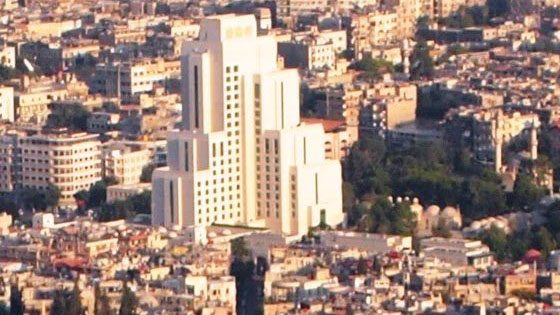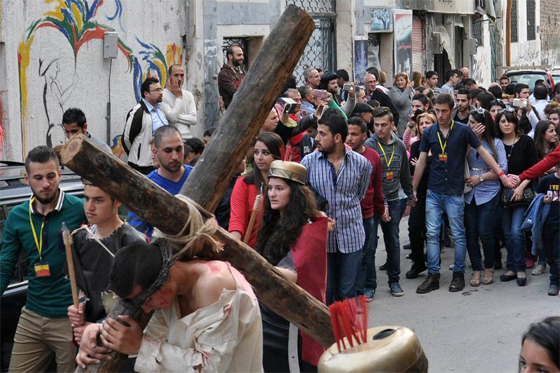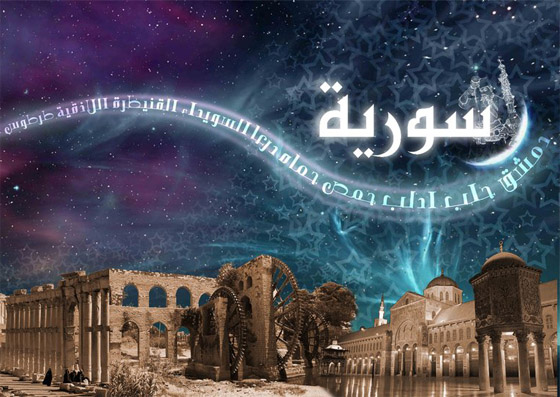BREAKING BARRIERS
Understanding The Syrian Refugee Crisis
What is Syria Like?
To understand who the refugees from Syria are, it is important to understand what Syria and its culture are like. Though Syria is currently in absolute disarray because of the civil war that rages within its borders, in order to connect with the people, it is good to understand what kind of environment was common to them prior to the civil war. All information was obtained from everyculture.com.
What is The Land Like?
Syria borders Turkey to the north, Iraq to the east, Israel and Jordan to the south, and Lebanon and the Mediterranean Sea to the west. It is 71,000 square miles (183,900 square kilometers) in area. One-third of the land is arable, and one-third is pasturable. The terrain is mostly desert, and home to drought resistant plants such as myrtle, boxwood, and wild olive. There is little wildlife. Remote areas have wolves, hyenas, and foxes; the desert has lizards, eagles, and buzzards. Most of the population is concentrated in the western region of the country, near the Mediterranean.

How Diverse is Syria?
Syria is ethnically fairly homogeneous (80 percent of the population is Arab), but religious differences are tolerated, and minorities tend to retain distinct ethnic, cultural, and religious identities. The Alawite Muslims (about a half-million people) live in the area of Latakia. The Druze, a smaller group that resides in the mountainous region of Jebel Druze, are known as fierce soldiers. The Ismailis are an even smaller sect, that originated in Asia. The Armenians from Turkey are Christian. The Kurds are Muslim but have a distinct culture and language, for which they have been persecuted throughout the Middle East. The Circassians, who are Muslim, are of Russian origin and generally have fair hair and skin.
The nomadic Beduoin lead lifestyle that keeps them largely separated from the rest of society, herding sheep and moving through the desert, although some have settled in towns and villages. Another group that remains on the outside of society both politically and socially, is the roughly 100,000 Palestinian refugees, who left their homeland in 1948 after the founding of Israel.

What do Syrians Normally Eat?
Wheat is the main crop and one of the staple foods. Vegetables, fruits, and dairy products also are commonly eaten. Lamb is popular, but most people cannot afford to eat meat on a regular basis. Islam proscribes the consumption of pork, and other meats must be specially prepared in a method called halal cooking. Amezzehis a midday meal composed of up to twenty or thirty small dishes. These dishes can include hummous, a puree of chickpeas andtahini(ground sesame paste);baba ganouj,an eggplant puree; meat rissoles; stuffed grape leaves;tabouleh(a salad of cracked wheat and vegetables);falafel(deep-fried balls of mashed chickpeas); and pita bread. Popular fruits that are grown in the region include dates, figs, plums, and watermelons.
Tea is the ubiquitous drink and is often consumed at social gatherings. Soda and milk are very popular, along with a drink made by mixing yogurt with water, salt, and garlic. Alcohol consumption is rare, as it is forbidden by the Islamic religion, but beer and wine are available, as is arak, an aniseed drink that also is popular in other Middle Eastern countries.
What is The Syrian Economy Like?
The basic unit of currency is the pound. The country supplies almost all of its own food needs. The proportion of the population working in agriculture has decreased significantly in recent years. Despite this decline, production has increased, thanks in large part to the dam at Tabqa, which has allowed for increased irrigation. Half of the workforce is employed in industry and mining. There is less of a gap between the rich and the poor in Syria than there is in many other countries, and as more of the population gained access to education, the middle class continued to expand.
What are Syrian Politics like?
Syria adopted its current constitution in 1973. There is universal suffrage. The unicameral legislative branch is composed of the People's Council, orMajlis al shaab, whose 195 members are elected for four-year terms. This body proposes laws, discusses cabinet programs, and approves the national budget. The president, who serves as the head of state and is required by the constitution to be a Muslim, is elected every seven years by popular vote. The president appoints a vice president, a prime minister who serves as head of government, a cabinet, and deputy prime ministers. The president has wide-reaching powers, including serving on the supreme court. Despite the distribution of political power, in practice, the military government has the ability to overrule all decisions.

What Kind of Education is Available to The Syrian People?
The literacy rate is 64 percent—78 percent for men and 51 percent for women. Primary education is mandatory and free for six years. Middle school, which begins at age thirteen, marks the end of mixed-sex education. Most schools are run by the state, which combines a French structure with the rigid discipline and rote learning of the Islamic tradition. There are a few religious schools, some schools that are run by the United Nation relief program, and some that are run by the Works Agency for Palestinian Refugees.
As far as higher education goes, Syria has vocational and teacher-training education as well as universities in Damascus, Aleppo, and Latakia. About 165,000 students (40 percent of them women) are enrolled in the universities. The learning situation is less than ideal, with large class sizes and outdated teaching and testing techniques. Students who can afford to obtain visas often prefer to study abroad
What About Syrian Art?
The Ministry of Culture and National Guidance promotes the national culture. Most publishing houses are owned by the state, and writers tend to be government employees. Censorship is enforced strictly, and foreign books about politics and contemporary Syrian or Middle Eastern history are banned. The National Film Centre, established in 1966, oversees the production of most films.
